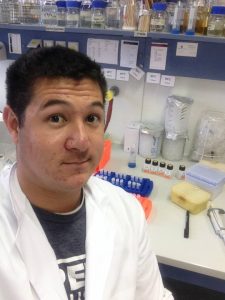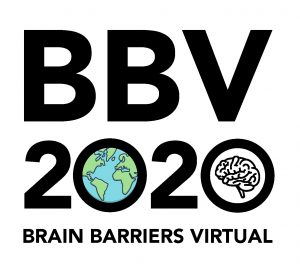New Faculty Spotlight: Dr. Brandon Kim
 Dr. Brandon Kim conducted his Ph.D. work in the laboratory of Dr. Kelly Doran at San Diego State / University of California San Diego where he began to examine the host-pathogen interaction of Group B Streptococcus and the blood-brain barrier. During his doctoral training, he was awarded the American Heart Association predoctoral fellowship as well as many other awards such as the ARCS scholarship and the Rees-Stealy Graduate Research Fellowship. After completing his PhD, he sought expertise in blood-brain barrier modeling by conducting postdoctoral training at the University of Wisconsin in the Chemical and Biological Engineering department under the direction of Dr. Eric Shusta, where he was awarded a Wisconsin Stem-Cell and Regenerative Medicine postdoctoral fellowship and was the first to implement human stem-cell derived blood-brain barrier models in the context of infectious disease. He then was awarded an Alexander von Humboldt fellowship for continued postdoctoral training in Germany, where he joined the group of Dr. Alexandra Schubert-Unkmeir at the University of Wuerzburg. There, he was able to establish a state-of-the-art stem-cell modeling technique using the human-specific pathogen Neisseria meningitidis and implement new RNAseq technologies with collaborators from the Helmholtz Institute for RNA and infection biology. Dr. Kim has published work in the Journal of Clinical Investigation, Nature Communications, Frontiers in Microbiology, and others. He has also mentored numerous undergraduate and graduate students throughout his training.
Dr. Brandon Kim conducted his Ph.D. work in the laboratory of Dr. Kelly Doran at San Diego State / University of California San Diego where he began to examine the host-pathogen interaction of Group B Streptococcus and the blood-brain barrier. During his doctoral training, he was awarded the American Heart Association predoctoral fellowship as well as many other awards such as the ARCS scholarship and the Rees-Stealy Graduate Research Fellowship. After completing his PhD, he sought expertise in blood-brain barrier modeling by conducting postdoctoral training at the University of Wisconsin in the Chemical and Biological Engineering department under the direction of Dr. Eric Shusta, where he was awarded a Wisconsin Stem-Cell and Regenerative Medicine postdoctoral fellowship and was the first to implement human stem-cell derived blood-brain barrier models in the context of infectious disease. He then was awarded an Alexander von Humboldt fellowship for continued postdoctoral training in Germany, where he joined the group of Dr. Alexandra Schubert-Unkmeir at the University of Wuerzburg. There, he was able to establish a state-of-the-art stem-cell modeling technique using the human-specific pathogen Neisseria meningitidis and implement new RNAseq technologies with collaborators from the Helmholtz Institute for RNA and infection biology. Dr. Kim has published work in the Journal of Clinical Investigation, Nature Communications, Frontiers in Microbiology, and others. He has also mentored numerous undergraduate and graduate students throughout his training.
How has COVID-19 impacted you?
Having been in Germany completing a postdoctoral fellowship, it ended up being quite interesting. Flights were starting to be canceled, my research institute was shutting down in Germany, and with my fellowship ending in April anyway; I had to essentially “flee” Germany. Within 48 hours of making the decision, I was on a flight from Frankfurt to San Francisco. So yes, I think that “interesting” would be the right word to describe my experience.
Additionally, like many other scientific meetings during the pandemic, our brain barriers conference held on alternative years, was canceled. That cancellation inspired me to  begin a virtual scientific seminar series entitled “Brain Barriers Virtual 2020” or BBV2020 along with two colleagues from the University of Kentucky. Initially we planned that this digital seminar would stand in-place of the canceled conference for the summer, which typically only draws together a couple hundred participants due to the constraints with the conference’s location. We had no idea of the scope and scale that BBV2020 would become. After the seminar was announced and launched, we rapidly realized that BBV2020 was going global. We had over 1300 people sign up from all corners of the globe, ultimately reaching six continents. The format included holding weekly seminars with speakers participating from both the USA and Europe. Currently, after having finalized surveying our participants, I am collaborating with Dr. Heinrich here at UA and utilizing the data collected to assess the reach and impact of BBV2020. Amazingly, the vast majority of participants have never had the opportunity to travel to a brain barriers research conference prior and only a virtual platform such as BBV2020 allowed them to participate in the current scientific discussion. BBV2020 is now on a planned pause as we assess the state of the field and the pandemic to decide how to continue.
begin a virtual scientific seminar series entitled “Brain Barriers Virtual 2020” or BBV2020 along with two colleagues from the University of Kentucky. Initially we planned that this digital seminar would stand in-place of the canceled conference for the summer, which typically only draws together a couple hundred participants due to the constraints with the conference’s location. We had no idea of the scope and scale that BBV2020 would become. After the seminar was announced and launched, we rapidly realized that BBV2020 was going global. We had over 1300 people sign up from all corners of the globe, ultimately reaching six continents. The format included holding weekly seminars with speakers participating from both the USA and Europe. Currently, after having finalized surveying our participants, I am collaborating with Dr. Heinrich here at UA and utilizing the data collected to assess the reach and impact of BBV2020. Amazingly, the vast majority of participants have never had the opportunity to travel to a brain barriers research conference prior and only a virtual platform such as BBV2020 allowed them to participate in the current scientific discussion. BBV2020 is now on a planned pause as we assess the state of the field and the pandemic to decide how to continue.
What motivated you to pursue a career in science?
I was fortunate enough to be raised in a household that embraced science and engineering. My dad is an electrical engineer who loves all aspects of engineering, and we would constantly plan and create projects ranging from model airplanes to building radios. While I loved all of these home projects, I never felt that urge to follow exactly in my dad’s footsteps. In high school I had an amazing biology teacher that really turned me on to biology. This guy was an absolute riot! He would talk about his mushroom hunting adventures constantly and even went out one day and collected an entire swarm of bees in the middle of the class session. The next day in class we had a bee hive set up in the classroom. So when I went to San Diego State I decided to pursue the biology major which, ultimately, set me on my career path.
Describe the path that led you to your current research / career area?
This is an interesting question because I truly believe that no one’s path is ever a straight one. When I started at SDSU my main focus was honestly lacrosse. I had played in high school and had always wanted to participate in a collegiate sport. I was fortunate enough to be relatively successful as an athlete earning conference recognition three of my years and playing on two national teams. However, around my junior year it was clear that this was not a career. At that moment of realization, I was enrolled in Dr. Love’s biochemistry course and became fascinated by biological molecules. I was thrilled when he allowed me to work in his lab focusing on protein engineering. During my 5th and final year as an undergraduate I was taking a heavy course load to earn my emphasis in cell and molecular biology and was enrolled in Dr. Doran’s microbiology course. Here, I was drawn to the interesting dynamic between the human host and the bacterial pathogen and the “molecular arms race” that occurs. After some inspiration from Dr. Love, I applied to graduate school at the University of California San Diego / San Diego State University joint doctoral program where I joined Dr. Doran’s laboratory. It is in this lab that I first began my work on bacterial interactions with the human blood-brain barrier. Towards the end of my doctoral training I attended a conference that changed the trajectory of my research forever. As a doctoral student in a primarily microbiology lab, I presented at a conference entitled Barriers of the Central Nervous System. There I was struck with the realization that microbiologists have been using outdated blood-brain barrier models to make their research more “sexy”, and that blood-brain barrier scientists examining infection, often didn’t even use whole microbes – only pieces of microbes! Faced with this realization, I made the first steps to attempt to bridge the gap between microbiologists and brain barrier scientists. To do so I began postdoctoral training in Dr. Shusta’s lab at the University of Wisconsin in the Department of Chemical and Biological Engineering where I utilized some of the most state-of-the-art human stem-cell based blood-brain barrier models and incorporated these into study host-pathogen interactions. With continued effort, I furthered my skillset and ultimately endeavor to stand in the middle of two vastly different fields to use modern microbiological techniques on the most current blood-brain barrier models to interrogate the complex host-pathogen interaction at the human blood-brain barrier.
What advice would you offer undergraduate and graduate students?
Get involved early and never be discouraged if the path you are on changes. Everyone’s path is unique and is almost never a straight line. Keep an open mind and always keep pushing forward. If you would have asked me as a senior undergraduate if I ever would do stem cell research I would have replied with “no way!” and yet here I am today using stem cell technologies to study what I do have a passion for.